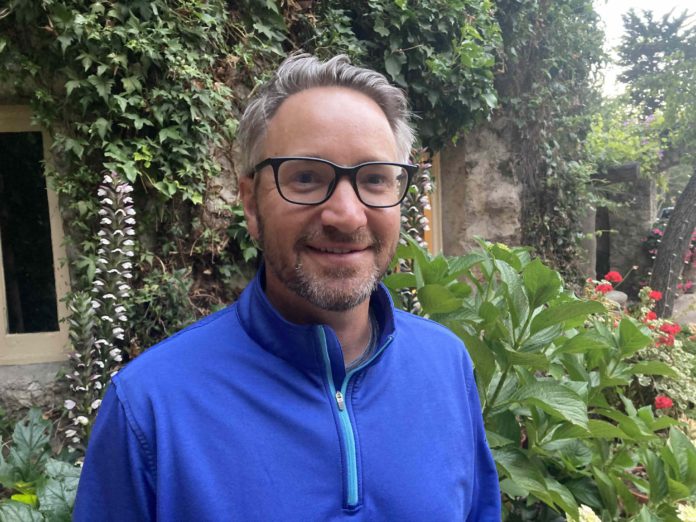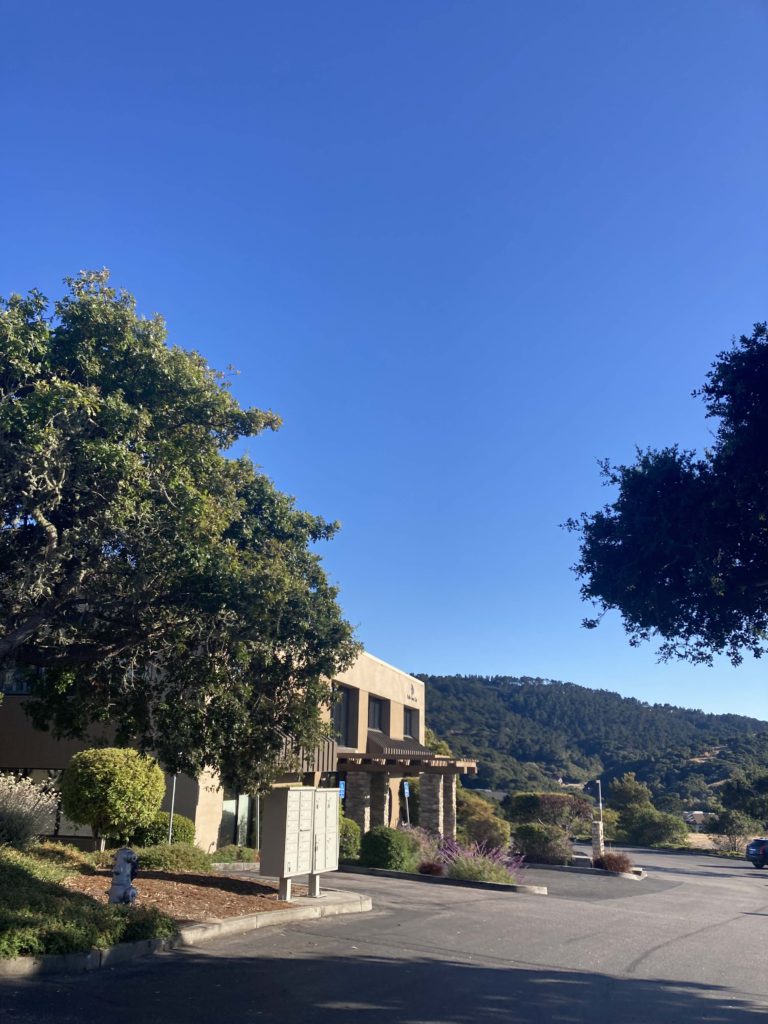
The frequent flow of planes dropping low over Central Coast shrubbery toward a Monterey Regional Airport runway, over brown mid-rise office-outpost rectangles that house the Pacific Cancer Care, recalls the constant stream of Silicon Valley air traffic descending into the San Jose Mineta International Airport, in view of the hospital campuses on Los Gatos’ periphery.
And as one of those corporate health systems (Good Samaritan Hospital) relinquishes control of its community radiology clinic along tree-lined Los Gatan streets, we decided to get to know the team at Pacific Cancer, which is stepping into the void—in partnership with the OneOncology network.
“A lot of community practices have either gone out of business or had to join larger organizations,” said Dr. Zach Koontz, Pacific Cancer Care’s president, speaking about why they teamed up with the management service group. “The margins are pretty narrow…It’s hard to make that work for a small practice.”
The money involved in diagnosing and treating people with various sorts of cancer can be mind-boggling. Drugs can range from $50 a dose to around $20,000. And smaller clinics face hurdles when it comes to penciling things out, compared to the big guys.
For example, Koontz explains, for a drug that costs $100, Pacific Cancer Care can charge, say, $108 to $110; a large hospital system can get the same drug for $100, but they can charge $312 or so.

“The crux of it is that small practices just haven’t been able to survive on their own,” said Koontz, on how they’re trying to buck the trend. “We’re trying to keep the care closer to home for patients.”
That’s important, he says, given just how intense the procedures can be.
“A lot of radiation treatments are every day for three weeks, four weeks, five weeks, six weeks,” Koontz said. “Most oncologists see an average of 80 patients a week.”
Last year, the Wall Street Journal reported that global oncology spending was set to about double by 2028.
It also noted that drug wholesaler McKesson bought US Oncology Network for $2.16 billion in 2010, while Cencora (previously known as AmerisourceBergen), another drug distributor, and TPG Inc. purchased OneOncology for $2.1 billion in 2023.
According to Grand View Research, the global medical imaging market hit $41.6 billion in 2024, and is projected to grow by just under 5% through 2030.
“The increasing prevalence of chronic diseases, surging demand for early disease diagnosis and detection tools, growing geriatric population, rising investments by key players, product innovations and technological advancements such as integration of Artificial Intelligence (AI) in medical imaging, development of point-of-care medical imaging equipment are expected to drive market growth during the forecast period,” reads the report.
Or, as Koontz puts it, “Cancer diagnoses are increasing, and that is largely a function of the aging population…Also, patients with cancer are living longer, which is a good thing.”
He says they’re investing in new devices for the Los Gatos site.
“The radiation unit kind of needs to be taken to the next generation of technology,” he said, adding they’re building a team that’s quite familiar with the needs of the South Bay town they’ll serve. “We’re happy to have local people serve their local community.”
Anthem Blue Shield Blue Cross and Medicare are on the list of insurance providers they’ll accept, he adds.
“If you are seen in a community practice, generally the cost of care is much more equitable,” he said.
But it’s not all about dollars and cents. These are real human lives. And the doctors are truly on the front lines fighting an enemy we don’t yet fully understand.
“I see younger patients, but they’re the minority,” he said. “I just lost a 40-year-old yesterday.”
And so, the most effective doctors know there’s more to cancer care than the latest AI innovation or digital scanning technique. You have to have a personal touch.
“You’re at least going to be able to comfort the people you do see,” Koontz said. “There are certain things (that happen) at big hospital systems that can’t be done in a community practice. We won’t do bone marrow transplants or heart transplants. Or, there are some really technical radiation therapies that are hard to do…for things like that we do send patients further away…but…most patients can get really high-level care and don’t have to travel a long distance.”
For Koontz, who once worked at Stanford Health, opening a clinic in Los Gatos is a bit of a homecoming.
“I used to live right on the border of Los Gatos and Campbell,” he said, noting he was just off the Los Gatos Creek Trail by Winchester Boulevard and West Hacienda Avenue. “It was great.”









